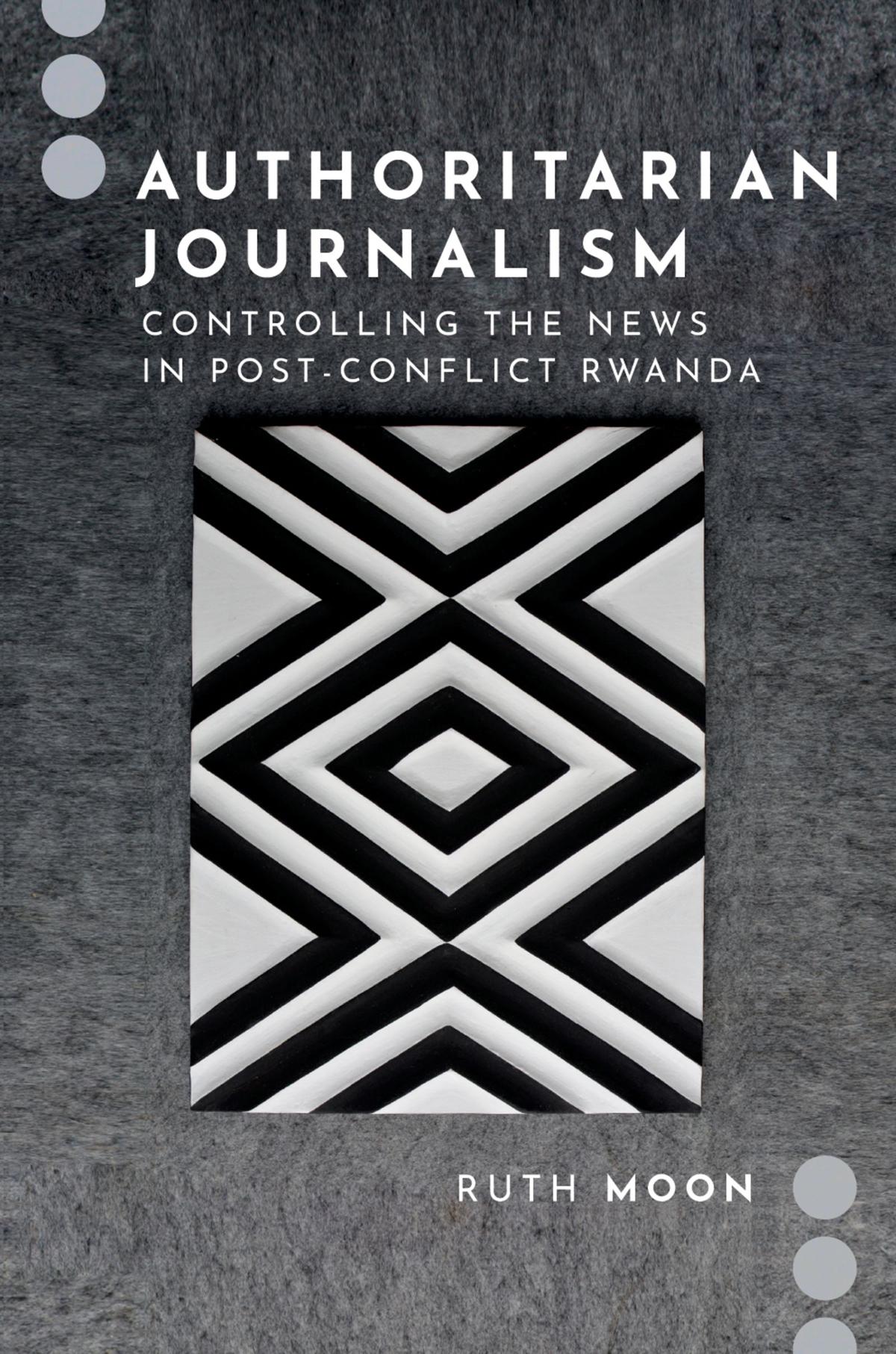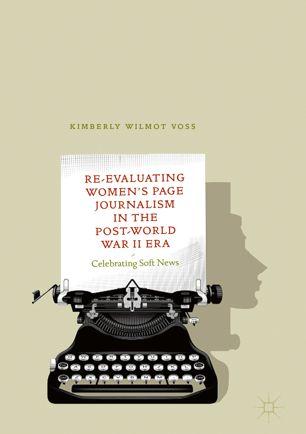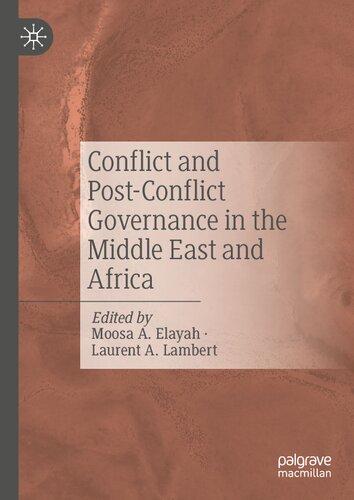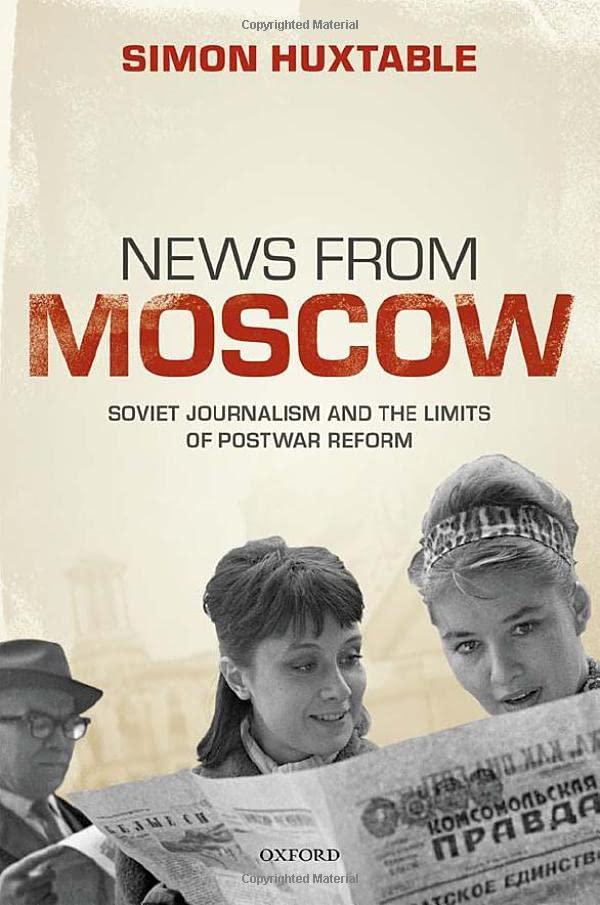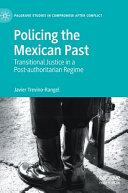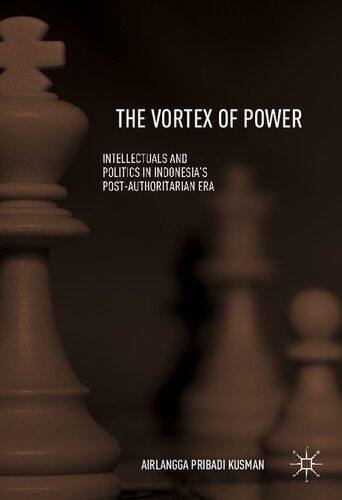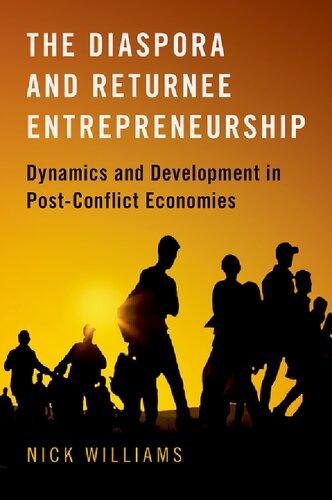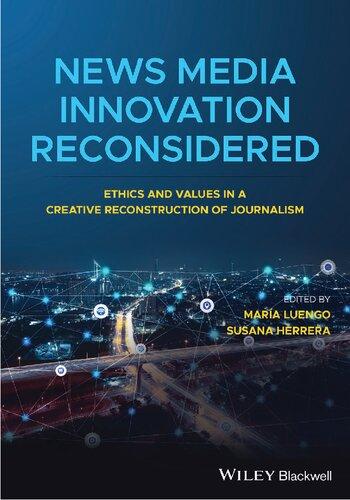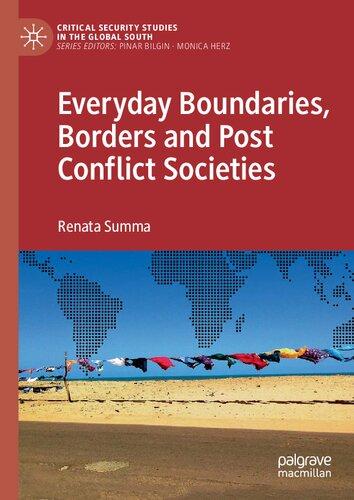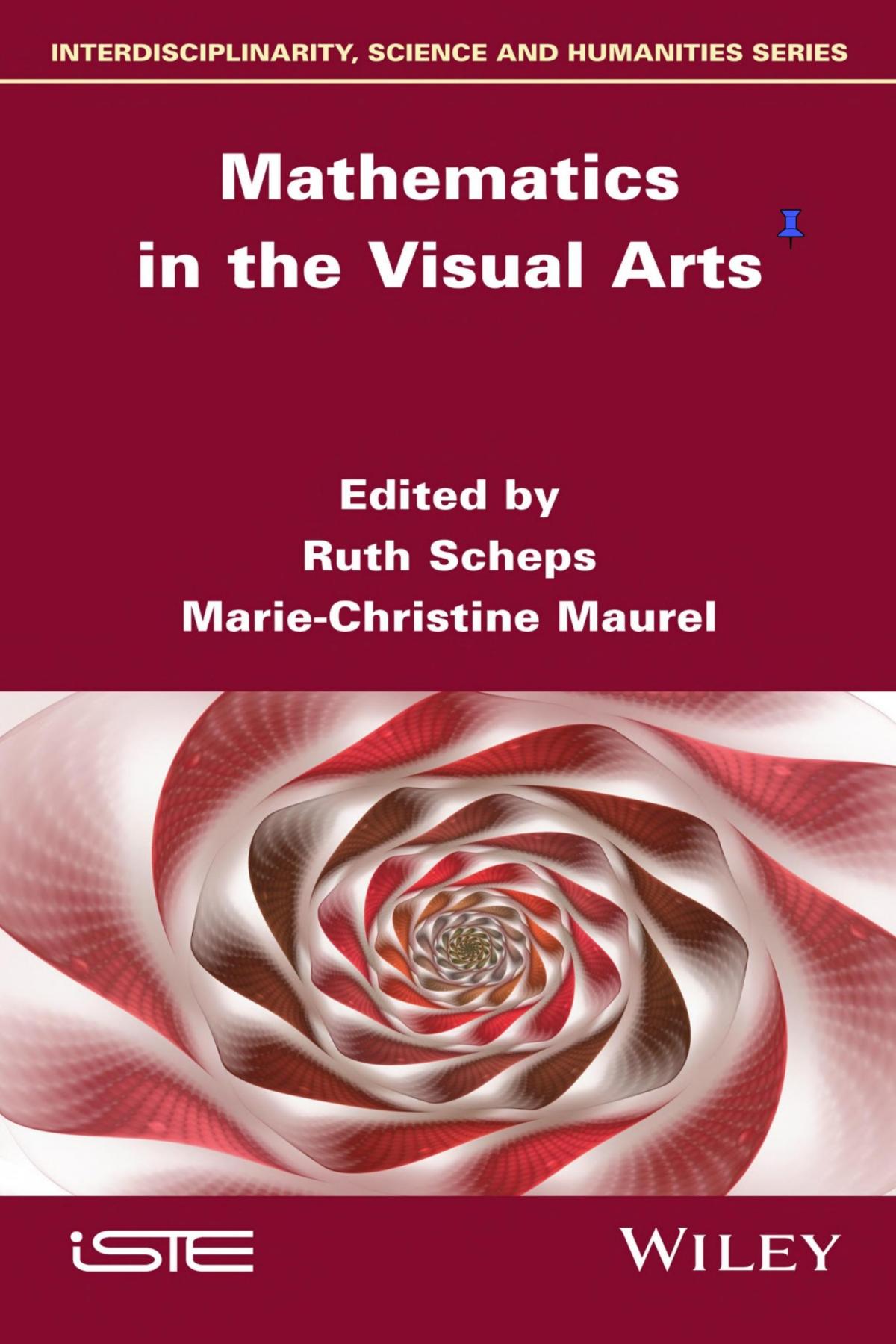Journalism
On a warm evening toward the end of June 2017, a group of Rwandans and expats gathered at Café Neo, a trendy rooftop coffee shop near the city center, often full of Americans and Canadians working on tech startups and other business ventures. Tables had been pushed to the edges of the room to accommodate rows of folding chairs and rain flaps rolled up to expose the clear evening sky. Empty Primus, Mutzig, and Skol bottles multiplied on the countertops as three panelists discussed the role journalism could play in Rwanda’s upcoming election. The panelists—a local journalist who worked for the Rwandan Media Commission and the East African (a regional weekly newspaper), the European Union ambassador to Rwanda, and a Kenyan professor who studied the media system—used the example of Kenya’s 2013 election to describe how journalists could foster violent or peaceful election processes. The audience included Rwandan journalists working for local and international media outlets, expats working for NGOs and other organizations, local journalism professors, and me—a white, American woman doing doctoral research. I was six months into fieldwork, trying to understand why Rwandan journalists neglected investigative reporting, flocked to government press conferences, and generally produced party-aligned reports while claiming that journalists should critique power and that laws and professional organizations encouraged and protected their right to independence and creativity. I joined the meeting late, alerted to it by Caleb,1 a journalist friend, but quickly caught the gist.
People tend to see Rwandan journalism in extremes, shaped in part by their perspective on the political environment. Some downplay the role of governance and politics in enforcing journalism practice, as the Café Neo panelists did (McIntyre and Sobel 2018, 20 19). This approach tends to focus on the ways that individual journalists’ perceptions, abilities, and training influence news production. Others see the political environment as so potently dangerous to critics that journalists have no choice but to pursue party-line journalism; this approach emphasizes the ways that journalists are controlled by others (Reyntjens 2013; Sundaram 201 6). Both approaches miss crucial aspects of control and freedom woven into the fabric of Rwandan journalism—not by politics or professional training, but through stories that are so powerful that they become myths shaping the rules of journalistic reality.
The panel’s presumption that Rwanda is governed by an emerging, if troubled, democracy comparable to Kenya’s is nonsense but is an important fiction with implications for journalism practice. Rwanda is one of a number of countries committed to image management as a strategy to bolster international legitimacy as a state that is “stable, responsible, and even democratic” (Dukalskis 20 21, 143). Kenya is a transitioning democracy characterized by intense and violent transfers of power and political conflicts. Rwanda is an authoritarian country with peaceful persistence of one-party rule, despite democratic symbols like regular elections. This is clear on several dimensions. Kenya’s elections are hotly contested; in 2013, the winning candidate received just over 50 percent of the vote, and the runner-up garnered 43 percent of the vote (African De mocracy Encyclopedia Project 2013). In contrast, Rwandan elections are practically unanimous. In 2010, the incumbent Paul Kagame took 93 percent of the vote, while the nearest runner-up, Jean Damascene Ntawukuriyayo, earned only 5 percent of the vote. In Kenya, ethnic divisions are public and frequent topics of discussion, and important determinants of political party (Wolf 2013). Ethnicity is important in Rwanda but nearly invisible in public discourse, because discussing it is illegal (Lacey 2004). Kenya’s parliament in early 2017 comprised a nearly even split between the two most
popular political parties, with 167 members from the Jubilee Party and 141 members from the primary opposing Orange Democratic Party (Oluoch 2017). After the 2018 parliamentary election in Rwanda, President Paul Kagame’s party—the Rwandan Patriotic Front—garnered 40 of 53 seats up for election, while the opposition Democratic Green Party gained two seats for the first time (Uwiringiy imana 2018). In short, Kenyan politics is chaotic, full of open debate that often turns violent, while Rwandan politics is ordered and controlled by the strong influence of the majority party, with little political opposition.
These observations all show that Rwandan journalists do not work in a democracy. Instead, with a growing number of journalists around the world, they work in a contemporary autocracy that incorporates democratic symbols into functionally authoritarian regimes. Different labels capture nuances in governance styles, but journalists working in these “competitive,” “soft,” or “developmental” authoritarian contexts share the distinction of working in “boring and tolerable” non-democratic regimes (Levitsky and Way 2002; Matfess 2015; Pepinsky 2017; Tripp 2004). In this book I examine Rwandan journalism to show how control works in these contexts—how journalists and other social actors set, learn, and maintain the boundaries of acceptable practice in a place where the overt rules encourage democratic engagement while the subtext pressures journalists into a different direction.
The panel discussion also reinforced an assumption that Rwandan journalists can be easily manipulated by political parties and others in power, and that they might unwittingly collude to cause chaos. The bulwark against this manipulability is individual training in skills and professional expectations. This emphasis on journalists as highly manipulable social actors is also reflected in, for instance, media assistance programs that aim to cultivate individual professionalism and critical thinking through workshops and codes of ethics. As one media program assessment puts it, “Journalists who are well educated, who know journalism-ethics and who are conscious of their social responsibility are not easy to manipulate” (Alexis and Mp ambara 2003, 27). This approach is buttressed by research
proposing that strong media dependency lent radio a seemingly powerful role in exacerbating the 1994 Genocide against the Tutsi, in which an estimated 800,000 to 1 million people, primarily of Tutsi ethnicity, were killed in a 100-day span from April 7 to July 15 (Kello w and Steeves 1998; Prunier 1997).
Putting these assumptions together, the panel’s message was that Rwandan journalists are free to stir up violence and chaos, and they might do so, even unwittingly, unless they become more professionalized and learn to think for themselves. This message clearly invoked a cultural memory of the genocide, suggesting that journalists might be manipulated or even choose to produce provocative content again and that they would be free to do so if they wished. Audience members pushed back, pointing out that Rwandan journalists are hardly free to critique just anything when most of the advertising, and hence the paychecks, comes from government and big businesses. Why would journalists risk their paychecks by criticizing the government officials who pay the bills? Murmurs of assent swept the room. The panelists, though, stuck with their message, treating Rwandan journalism as a democratic institution with the freedom to spread information and—whether by inclination or manipulation—stir up violence.
At this point, I had been in Rwanda—a small, landlocked country in the Great Lakes region of Africa with a population of about 12 million—since January 2017. I had spent most of that time in newsrooms watching and interviewing reporters, editors, photographers, and others involved in news production. This evening helped me frame Rwandan journalism by clarifying the contradictions that shape so much of journalists’ work. It also encapsulated the problematic assumptions that shape observers’ views of journalism practice in the country. By ignoring the history and lived reality guiding Rwandan journalists to behave differently, the panel discussion reinforced a message that social and political pressures were not, in fact, important forces shaping journalistic behavior. This approach neglects important aspects of reality; it also pushes journalists and observers away from recognizing the real constraints
on their practice and leaves them blaming individual journalists for failing to produce news the way they think they should.
The evening’s discussion implied that the upcoming election could foster violence, and that Rwandan journalists had the power to either exacerbate or calm the violence through their decisions about how to cover the coming months’ events. Both assumptions were wrong. Caleb predicted, accurately, that the election would be no contest, with no accompanying violence. And, as I will argue in this book, by this point in Rwandan history, local journalists had little, if any, power to affect the election or social response to it. Instead, Rwandan journalists operate with such a low level of autonomy reinforced, ironically, by myths about their powerful role in the genocide and their ability to write critical news if it is reported well— that the enforcement of a few standard journalism routines is enough to ensure that provocative, critical, or potentially inflammatory news never makes it to publication.
The assumptions perpetuated by this roundtable discussion are common, both about journalism in Rwanda specifically and about journalism in other modern authoritarian societies. The idea comes down to this: journalists have enough autonomy to fulfill a liberal democratic role as government watchdogs and guardians of the people’s interests, if only they will exercise that power which they can do if they become more professional and learn more reportage skills. Furthermore, if journalists don’t have that autonomy already, they will fight to gain it. This assumption is rooted in research; scholars studying journalism around the globe find that journalists prioritize autonomy as a central feature of their professional identities (Carlson 2017; Waisbord 2013). Journalism schools and professional workshops—often funded and staffed by foreign aid agencies—teach “critical thinking” on the assumption that journalists do not currently have enough of it. If they did, the logic goes, they would surely have autonomy and, by extension, more liberal democratic orientations to news production. Rwandan journalists themselves share the assumption that it’s their own fault they are not more powerful, dismissing their work as “PR for the government” and critiquing their colleagues for lacking professionalism on one
hand while failing to stand up for themselves on the other (sentiments shared by many journalists I interviewed). It is true that Rwandan journalism is, like journalism across the continent, often characterized by bandwagonism and mimicry, with an emphasis “less on thinking than on doing, less on leading than on being led,” but the reasons for this are complex and rooted in history, social understanding, and Western intervention as well as local constraints (Nyamnjoh 2015, 37).
To understand journalism in this contemporary, authoritarian state, I approach it as a field of power where journalists are playing a game, with moves and rules like soccer or chess. In this field, actors with varying levels of prestige and resources interact with each other and with members of other social fields (like politicians and corporate leaders). Using this lens, I analyze ethnographic data from seven months of fieldwork and 80 interviews with journalists in and around Rwanda. News content tends to follow the pattern one might expect from journalism in an authoritarian system: it is fairly government aligned and generally uncritical. However, the process by which this news is created has several surprising lessons for scholars, policymakers, and practitioners. Among the most surprising is that journalists themselves embrace a position of limited autonomy, motivated by field-defining myths rooted in shared history and serving as a cautionary limit on contemporary practice. Rwanda presents an important model of contemporary journalism, one where journalists relinquish their autonomy because of limited and unreliable support from legal and social systems but also because shared stories take on the power of professional myths reinforcing the boundaries and rules of appropriate journalism practice. These journalists recognize the distance between the reality of practice and the hypothetical world of education and training but strategically choose a self-reinforcing path of continued dependency. They are often just passing through the field of local journalism, where they play by the rules until they have earned enough prestige and resources to get a different job in Rwanda or a journalism job defined by transnational, rather than local, rules.
Over the past decade journalism scholars have increasingly used field theory to explain aspects of journalistic behavior and news production, primarily focusing on journalism practice in Western democracies (Maares and Hanusch 2022). Within this approach, studies often focus on the concept of “field,” using it to examine the common tension between market pressure and autonomy or the ability to pursue professional values (Leeds 2022; Maares and Hanus ch 2022). The field concept is especially useful for scholars seeking to unpack the variety of approaches journalists take to their work. It highlights, for instance, the problems with characterizing “African media” or even journalism within a particular African country as a monolithic entity, when in fact different media outlets can perpetuate vastly different media narratives (Wahutu 2017, 2018c). As James Wahutu shows in his forthcoming book on African media coverage of the Rwanda and Darfur conflicts, it can illuminate the complex power dynamics at play within coverage and source decisions by media organizations and fields (Wahutu, in press). It positions journalism as a contributor to culture and community, aligned with the African concept of Ubuntu and collective knowledge production (Fourie 201 0). The game approach to journalism practice also can pinpoint areas where incorporation of dominant Western journalistic paradigms generates harmful tension within local African fields (Wah utu 2019). In short, field theory provides tools to complicate the Global North-oriented assumption that there is one way of doing journalism (Mutsvairo et al. 2021). In this book, I continue this conversation, examining a journalistic field as construed by key practitioners in an authoritarian African context. I show how, in Rwanda, the tension between market pressure and professional values is softened and redirected by a variety of implicit and explicit factors, including narratives about journalist roles, financial pressure, and organizational norms. As a result, the rules of local journalism shape a porous field whose rules and rewards incentivize departure. This argument contributes to scholarship, practice, and policy. Common research findings about journalism practice and motivations fail to explain the complexity of news production in Rwanda and, by extension, many places around the contemporary world. My analysis
demonstrates how existing theories fall short of adequately capturing the complexity of news production in non-democratic countries and how these theories can benefit from fresh encounters with new sources of data. Scholars should continue to examine the nuanced reality of news production in the context of, but not limited by, current (often Northern) theoretical approaches to create a clearer and more thorough understanding of reality. This book can serve local journalists by describing the shared reality of Rwandan journalism and critically assessing the capacity and limitations of local journalism practice. While local journalists say they value an autonomous watchdog role, they do not practice it (McIntyre and Skj erdal 2022). This book explains why, and in so doing provides shared language that journalists, policymakers, and others can use to discuss and shape the future of the Rwandan journalism field. With a clear, shared understanding of the current reality, journalists in Rwanda and other authoritarian contexts may find new paths to expanding autonomy while also developing a journalism practice grounded in local reality rather than Global North ideals. Journalists and those supporting the profession might benefit from relinquishing an ideal of watchdog journalism and embracing instead values of development journalism adapted for local needs and pressures. Finally, this book reinforces the importance of grounding journalism education and professional development programs in knowledge of local practices and context. Locally illiterate international aid interventions aimed at strengthening media capacity are at best ineffective and at worst counterproductive as they allow authoritarian governments to signal transparency without improving journalists’ security, access, or paths to publication.
Post-conflict Journalism in a Strong State
Journalism in Rwanda is a high-profile and low-reward profession where journalists are the subjects of frequent surveillance, observation, and critique. It is particularly high profile because of Rwanda’s post-conflict context, its centralized government, and that
government’s mission to cultivate a positive international image from a global periphery position. Each of these factors contribute unique pressures to the journalistic work environment, which is shaped by popular narratives about media role in the genocide, state policies, and government publicity efforts. However, Rwandan journalism also shares similarities with journalism practice around the world— particularly in post-conflict or authoritarian environments. Some of these pressures even show up in the United States, where President Donald Trump repeatedly targeted journalists with negative rhetoric, even calling them “the enemy of the people” (Carlson et al. 2021). This book unpacks the challenge of practicing journalism in a context where journalists are high-profile targets of critique burdened—fairly or not—with a negative social role.
Journalism in Rwanda is indelibly shaped by the effects of the 1994 genocide. Aid and development studies show that Rwanda has transitioned past the “post-conflict” phase of recovery, but in practical terms the genocide is inextricably woven into the fabric of governance and social life in ways that deeply affect journalism practice. State surveillance, while it predates the genocide and even colonial rule, has become increasingly visible and central to social organization since 1994 (Purdeková 2015, 2016). The post-genocide government’s international image management reinforces the importance of democratic symbolism and security while enhancing authoritarian control (Dukalskis 2021; Samset 2011). Government messages reinforce official, often selective genocide narratives, sometimes at the expense of nuance, in public spaces, including news reports (Kelley 2017; King 2010; Waldorf 2009). The Rwandan genocide is a particularly extreme case of conflict, but journalists in Colombia, Bosnia-Herzegovina, Ireland, and other countries emerging from conflict grapple with similar attempts to control postconflict memory and construct official narratives while being closely surveilled for their ability to shape public messages (Atanesyan 202 0; Bratic 2008; Fiedler and Mroß 2017; Jukes et al. 2021; Lundy and McGovern 2001; Takševa 2018). The social and political factors shaping Rwandan journalism highlight how the post-conflict context
presents powerful barriers to some practices and incentives toward others.
Rwanda also offers insight into the nature of journalism practice in the growing number of non-democratic countries around the world. In 2020, Rwanda was one of 54 authoritarian countries around the world, and the number of authoritarian regimes is increasing—up from 52 countries in 2018 (Economist Intelligence Uni t 2020; Shapiro 2017). These countries house more than one-third of the world’s population; meanwhile, just 8 percent of the world’s population lives in a full democracy (The Economist 2021). And democratic backsliding—in which governments disrupt or remove existing democratic political institutions—is on the rise (Bermeo 201 6; Mechkova et al. 2017; Vachudova 2020; Waldner and Lust 2018). Non-democratic media systems increasingly demand scholarly attention, and Rwanda provides a window into mechanisms of control in such a context. Rwanda’s contemporary authoritarianism is emblematic especially of countries with low levels of power in the global economy, where appearing democratic brings important political and economic benefits. Across sub-Saharan Africa, governments have instituted symbolic events and institutions such as elections, independent media governance, and judicial systems, which seem democratic but are in fact closely controlled by central authorities to prevent opposition (Levitsky and Way 2002). In another neo-authoritarian move, the Rwandan government controls the country’s major business interests, with government-owned organizations dominating domestic manufacturing and agricultural business (Gökgür 2012; Mann and Berry 2016). These neoauthoritarian features are increasingly widespread and have powerful effects on journalism practice.
Some of the hybrid aspects of Rwandan governance likely stem from the country’s reliance on global aid and development funds, which often come from Western democracies that require some semblance of democratic governance to grant aid (Tripp 2004). In this, Rwanda joins most countries in the world on the periphery of global power, with its relatively low GDP and low levels of global political and military power, making it financially dependent on the
goodwill of a small group of core countries, which include the United States and other strong democracies (Chase-Dunn et al. 2000). These democracy-related governance expectations spill over into journalistic regulation and thus affect practice, especially since many Western funders see functional and independent media organizations as a bellwether for and fundamental aspect of healthy democratization (Bläsi 2004; Hanitzsch 2004; Laplante and Phenicie 2009; Mattes and Bratton 2007; Paluck and Green 2009; Shaw et al. 2011). The image-conscious Rwandan government relies heavily on PR firms to promote an image of peace, prosperity, and unity to the international community to maintain the flow of international aid, which constitutes a major portion of the country’s budget—50 percent in 2008 (Dukalskis 2021). As a result of aid incentives, global policy pressure, and increasingly porous national boundaries allowing information to spread between countries, governments today are more likely to control news coverage by buying news outlets and withholding advertising than by, for instance, censoring negative content or arresting journalists for critiques (Hughes 2006; Repnikova 2017; Roudakova 2017; Waisbord 2000).
This context has fundamental implications for news production in Rwanda. Journalists are immersed in globalized journalism culture— primarily oriented to Western contexts and needs—through education and training, and overt messaging from government and journalism leaders promotes independence, freedom, and protection of journalists. However, shared myths within the field, poor legal enforcement, limited training, and strong financial pressures reinforce a weak field that is defined by limited autonomy and a set of orthodox news values at odds with those promoted by training and global journalism culture.
This finding is important for several reasons. It expands journalism and mass communication scholarship by showing in a fresh context how building a study from Western theory and expectations without grounding it in local context can miss or even deflect from the nuances of journalism on the ground. A core assumption of journalism scholarship—that journalists value and seek autonomy—falls apart on inspection in the Rwandan field.
Instead, most Rwandan journalists embrace limited autonomy, and the common routines of journalism practice serve to reinforce the value of following rules rather than questioning authority. To understand why, we must explore a complex system of control that includes powerful myths alongside ethical norms, laws, and other shaping pressures. Journalism’s power is set in part by legal and political structures, but it is also negotiable and subject to change through shared stories about the occupation. These myths about journalism and journalists—retold by the public and by journalists— shape the collective imagination of journalism’s potential to benefit or harm society, affecting public support of the profession and how journalists think of their own potential and limits. I show how this happens in Rwanda, but my argument helps explain the underpinnings of self-censorship across many non-democratic societies.
This research contributes to policymaking as well. Journalists often play a powerful role in political processes like elections and judicial processes; they can foster peace or conflict, and they are important actors in democratic transitions (Bläsi 2004; Hanitzsch 200 4; Laplante and Phenicie 2009; Mattes and Bratton 2007; Paluck and Green 2009; Shaw et al. 2011). Newspapers create community identity, which is an important component of state consolidation (An derson 2006; Höhne 2008). In sub-Saharan Africa in particular, journalism plays a critical role in post-conflict transitions, and, moreover, journalists want to help; journalists in Kenya, for instance, say they want to promote social change and provide information to the public (Ireri 2017; Nkurunziza 2008). In light of this, the international community since the end of the Cold War has dedicated hundreds of millions of dollars and other support to assisting the news media in post-conflict and democratizing societies (Howard 200 3; Murphy and Scotton 1987). However, those interventions are often poorly planned. Instead of using country-specific knowledge to develop tailored programs, international donors base their interventions on broad, inaccurate generalizations from their own experiences (Karlowicz 2003). In reality, of course, models of governance are diverse, coexisting with a variety of media systems,
even across Western European democracies (Hallin and Mancini 200 4, 2012; Strömbäck and Dimitrova 2006; Waisbord 2013). And poorly designed interventions are not just inefficient; to the extent that liberal democratic models have been incorporated in Rwandan journalism, they are in fact counterproductive, serving to intensify an authoritarian system rather than aiding democratization. This book shows the complexity of motivations and other pressures driving journalism in Rwanda—information that policymakers can use in designing interventions to Rwanda and other small, post-conflict authoritarian countries. It also highlights the importance of locationspecific research in devising effective assistance programs.
Finally, my research provides insights for practicing journalists. By unpacking the contradictions I observed in Rwandan journalism practice, I highlight points of breakdown and potential reconstruction that can be difficult to observe while immersed in daily work routines. Rwandan journalists and those practicing journalism in similar contexts may find this useful in their efforts to further professionalize the field, especially by developing locally aware approaches in journalism education, training, and ongoing incentives. This book can also inform journalists in established democracies about the complex mental labor involved in nondemocratic journalism practice.
Contemporary journalists working on the periphery of global power occupy precarious positions in many ways (de Bustamante an d Relly 2021). They must constantly negotiate competing frames of reference to meaningfully motivate everyday decisions. Especially in places where journalism was first instituted as a state-building enterprise in a colonial context, overlapping global and local fields contribute to the complexity of journalism practice by introducing layers of competing norms and pressures for journalists to accommodate. Rwandan journalists work within boundaries set by local society and politics alongside global forces. Global forces encouraging autonomy and independence compete with local narratives supporting loyalty and acquiescence. This book highlights the tension inherent in doing journalism in Rwanda and other countries where governments combine symbolic democratic practices
with functional authoritarianism. In these places, journalism constitutes a border zone between global and local views of power, governance, and action. I contribute to a global view of journalism by identifying and unpacking the work of constructing personal and professional identity in a field that is both globalized and local.
Globalizing the Journalism Field
Rwandan journalists face constraints and incentives similar to those journalists face around the globe, in that their work is shaped by systemic and social forces, institutions, organizations, routines, and individual preferences and identity (Shoemaker and Reese 2013). However, Rwandan journalism highlights the ways that globalization mixes the levels together, creating new, complex situations (Appadur ai 1996). The result is organizations like Rwanda’s most prominent English-language newspaper, the NewTimes, where global and local pressures layer in a confusing cacophony. Organizational norms are officially shaped by globally grounded ethics and an unbiased “editorial line” mandating neutrality. However, the organization relies heavily on advertising from government agencies, and several editorial board members have close ties with the country’s main political party, the RPF, leading to a pro-government publication bias. As a result, journalists learn by trial and error that, while spoken rules embrace global journalistic practices such as objectivity and independence, editors in fact reward and publish news that supports government policies.
Cross-national flows of information, people, and tools can increase uncertainty in the journalistic profession, as happens at the NewTimes. They also give journalists larger potential audiences and increased international attention, thus raising the profession’s profile as well. In places like Rwanda, journalists are an important part of the nation’s international reputation and local power. Their news tells locals what is happening but also contextualizes government behavior as normal or odd; at the same time, they are under close observation from international organizations that treat journalism as
an indicator of democratic health. As journalists channel and shape information for their audiences, they are shaped by global processes and also become agents of globalization (Castells 2009). Western influence permeates journalism practice in the Global South, extending even to sourcing practices among African journalists, who tend to prioritize Western over local voices in continental coverage (S erwornoo 2021; Wahutu 2018a, 2018b). Journalists today regularly receive and send information across national borders through wire services such as Reuters, the Associated Press, Agence FrancePresse, Inter Press Service, and Xinhua. They also repackage information for their own audiences, shaping those wire stories by adding context to make stories more relevant to local geographic, political, or social realities. News media thus channel global power by strategically repackaging information for crucial local audiences while signaling local context to international observers.
Thinking of journalism as a game played on a field or board helps unpack the effect of globalization and its intersection with local pressures to shape news production. Field theory is rooted in the belief that one must examine social actors’ relationships with each other and with actors in other fields to really understand how they behave and why (Krause 2017). In general, as I noted earlier, Bourdieu and others who have built and used field theory think of the field as a flat space resembling a chessboard or a soccer field. In this flat space, players take different roles depending on their skills and motivations; financial security and internal prestige are key, opposing motivations that drive players’ moves. Most journalists are to some extent motivated by desires to be both financially stable and to be respected professionally. However, some, like news aggregators in the United States, hold roles where money is a bigger motivation, while others, like journalists at nonprofit organizations, hold roles where fulfilling a journalistic ideal is central (Coddington 2 019; Konieczna 2018). Fields can be relatively strong or weak, depending on how much autonomy the members have to set their own goals and pursue them and on how closely the members agree on those goals and best practices (Steinmetz 2008; Vauchez 2008, 2 011). Individuals can also choose to leave fields altogether, and
boundary-crossing behavior can reveal important points of tension and weakness in the field—as, for instance, when actors move between journalism and political roles in Zimbabwe (Chibuwe 2021).
Globalization adds a third dimension to the playing field, and a non-democratic context changes the way journalistic motivations intersect. As Rwanda shows, the result is a slippery field with holes in the borders, where journalists tend to leave for either local political positions on one hand or international journalism positions on the other. Journalists on the global periphery—in countries with limited power relative to major global forces—know about and must make sense of messages from international forces as well as the traditional layers of social forces within an area (Ferguson 2006). Journalists also can work for organizations based in different countries and thus in different journalism fields without physically moving. A Rwandan journalist in Kigali could work for the NewTimes or KT Press, but they could also work for Reuters (a global wire service based in the UK), Deutsche Welle (based in Germany), or Xinhua (based in China). Each of these international positions requires the journalist to follow production rules from multiple countries—reporting in Rwanda and writing news for an audience elsewhere—thus adding a transnational layer to the concept of a field. This added layer also changes the ways journalists can gain power: rather than looking for a better-paying job or more prestige within local journalism, they can move to a position where they gain prestige or money playing by German, Chinese, or transnational journalistic rules.
The ability to play by different rules without physically changing locations suggests that journalism fields can overlap in one location and are not always defined by national borders. Journalists leaving the NewTimesto work for Reuters, for instance, leave the Rwandan field to work in a global journalism field; Reuters is headquartered in London but produces news for subscribers around the (primarily Western) world, and has bureaus and stringers worldwide as well. Global fields often carry different values and incentives than their national counterparts, while still requiring members to have credibility in local spaces (Buchholz 2016; Go 2008). This field
layering also changes the ways that journalists can gain and use power: journalists with minimal credibility at the NewTimesbecause of their inclination to write investigative pieces, for instance, might find that taking a job for the Associated Press or Deutsche Welle provides a better opportunity to influence Rwandan politics because of the power globalization gives to international image management (Sassen 2007).
Finally, globalization affects the rules and roles that journalists adopt within a field. Especially in contemporary authoritarian contexts, journalists often must make sense of contradictory values leading to different social roles, some imposed by global journalism communities and others imposed by local needs and restrictions. Across Africa, journalists must integrate liberal democratic values with inherently contradictory but equally democratic “African notions of personhood and agency” (Nyamnjoh 2005, 20). Journalists are thus tasked to promote democracy, save face with foreign dignitaries, and support pro-African interests, all at the same time— often an impossible contradiction of roles. In Cameroon, these pressures lead journalists to become partisan, politicized, and militant, and to promote authoritarianism over democracy (Nyamnjo h 2005). In Rwanda, this means that there is a wide gap between role conception and role performance: journalists say they should fill a watchdog role but actually support the political regime, and the more autonomy they say they have, the larger the gap (McIntyre an d Skjerdal 2022).
Setting Field Boundaries
Whether a particular journalism field is global, transnational, or local, it is defined by boundaries establishing what is and what is not appropriate, what counts as journalism and what does not. Boundary work defining “real” journalism happens in relationships between journalists, audiences, sources, lawmakers, and others (Car lson 2017; Gieryn 1983).
A major contribution to the boundaries of journalism usually comes from the political sphere, where laws and informal expectations shape how journalists should act in general and how they should act with reference to the political system (Freedman 200 8). Politicians and laws have shaped the boundaries of journalism by, among other things, taxing ink and paper and raising shipping costs; providing subsidies for periodical postage in the US mail system; and controlling who has access to information via freedom-of-information acts and other laws (Cook 1998; Hallin and Mancini 2004; Kielbowicz 1983; Nielsen 2014; Overholser and Jamieson 2005; Schudson 1978; Starr 2004; Winsbury 2013). National and local governments contribute important boundaries to journalism practice. Journalism practice looks different in Rwanda than in Uganda, in large part because the national border defines different laws and political systems that in turn encourage different sorts of social interaction (H anitzsch and Mellado 2011).
Economic systems, also contained within national boundaries, are another force shaping the borders of appropriate journalism. More commercially oriented journalism fields—like the one in the United States—tend to produce news that is relatively sensational, episodic, and ideologically similar, while less commercially driven media tend to be more ideologically diverse and detailed in their coverage (Bens on 2013). Within one field, organizations can span this range, with mass-oriented news outlets prioritizing entertainment values and elite-oriented news outlets prioritizing more thorough background and policy information.
These relationships look different in authoritarian contexts than in democracies such as the United States. In Rwanda and places like it, financial constraints and incentives can be closely linked with politics through funding, ownership, and small circulations. In some places, the government openly owns some or all media outlets. In Uganda, for instance, the highest-circulation English-language newspaper, the NewVision, is majority owned by the national government (Vision Gr oup). In other countries (like Rwanda), the state has a financial stake in media outlets, but it might be hidden beneath layers of private ownership. While this sort of ownership gives the appearance
of distance between the political system and news organizations, research in China, Russia, Turkey, and other authoritarian countries has shown that “independent” ownership does not lead to independent journalism. In fact, it can make media organizations more effective self-censors and state messengers because they now appear to be independent but in reality still face pressure from advertisers to produce news in a certain, often state-aligned, way (St ockmann and Gallagher 2011; Coskuntuncel 2018; Roudakova 201 7).
Often, scholars don’t look past national boundaries in thinking about field structure, focusing on national journalism cultures as they define appropriate journalistic behavior. However, globalization adds an extra layer of boundary-setting pressure that is especially important in countries on the global periphery. It affects political pressure; foreign aid dependence and a desire to present a certain image to the international community can lead to laws that look democratic and thus are internationally acceptable but are enforced erratically or not enforced at all, thus supporting journalists on paper but not in practice (Michener 2011; Tripp 2004). For instance, more than 70 countries have enacted freedom-of-information laws in the last two decades, signaling increased government transparency and, in theory, giving journalists access to information with which they can hold governments accountable. However, Greg Michener shows how a number of these laws have been passed as window dressing to appease international organizations like the UN or the World Bank. In some cases, the window-dressing laws may be harmless, but in others, they make information access harder—as, for instance, in Zimbabwe, where an FOI statute limited access to information that had previously been available (Michener 2011). This shows how pressure from a global political community can lead to legal situations that limit the work journalists can do. Global pressure can work the other way as well, giving journalists power to circumvent local pressures and publish despite restrictions. One journalist told me that “Rwanda wants to be seen well internationally,” and journalists can use this international awareness to their advantage (Moon 2019, 1724).
